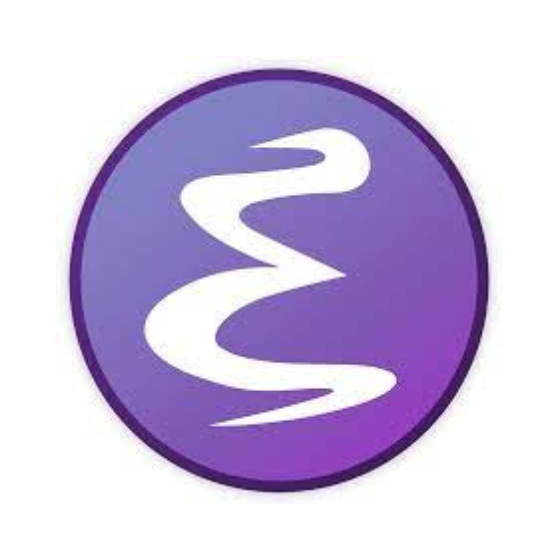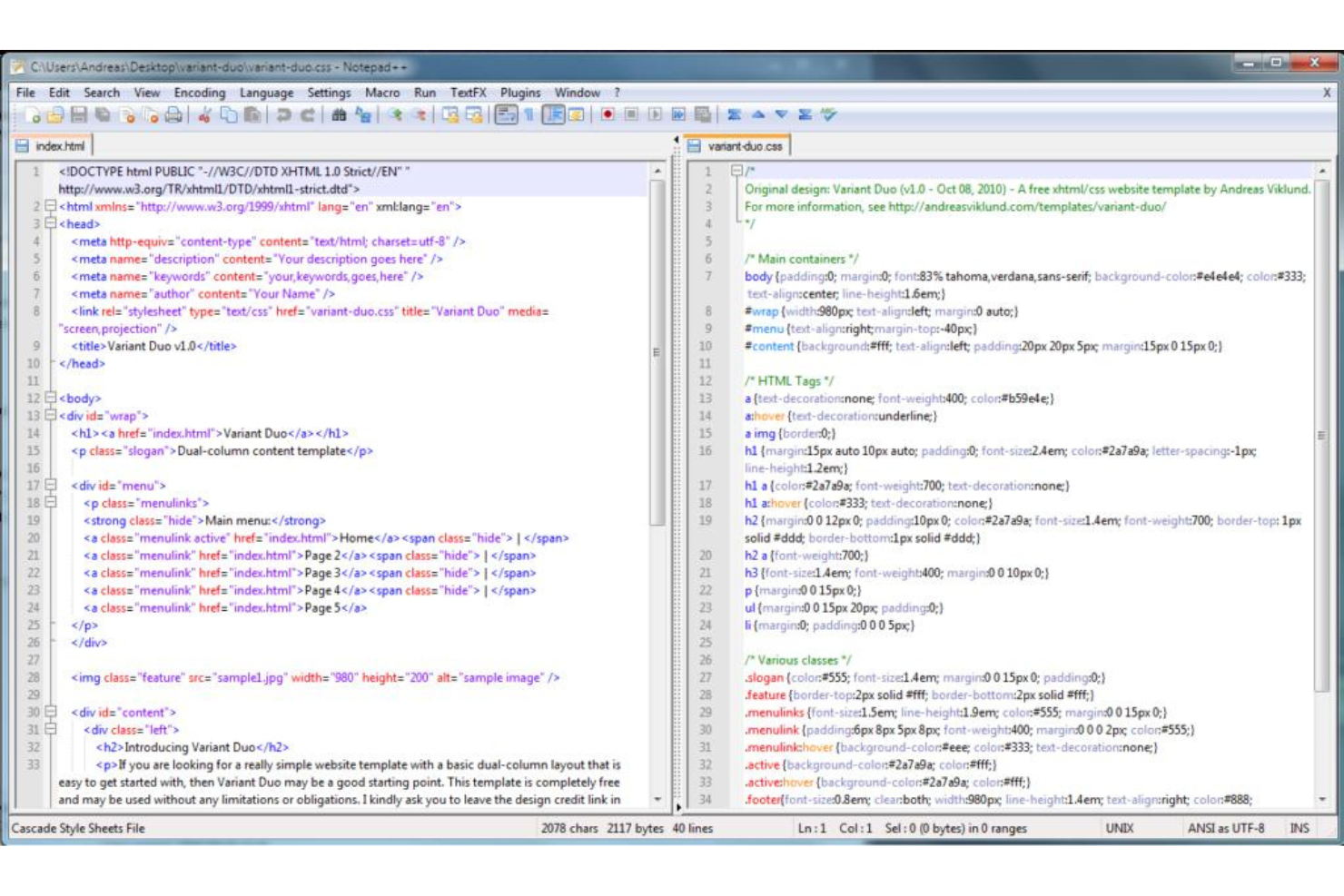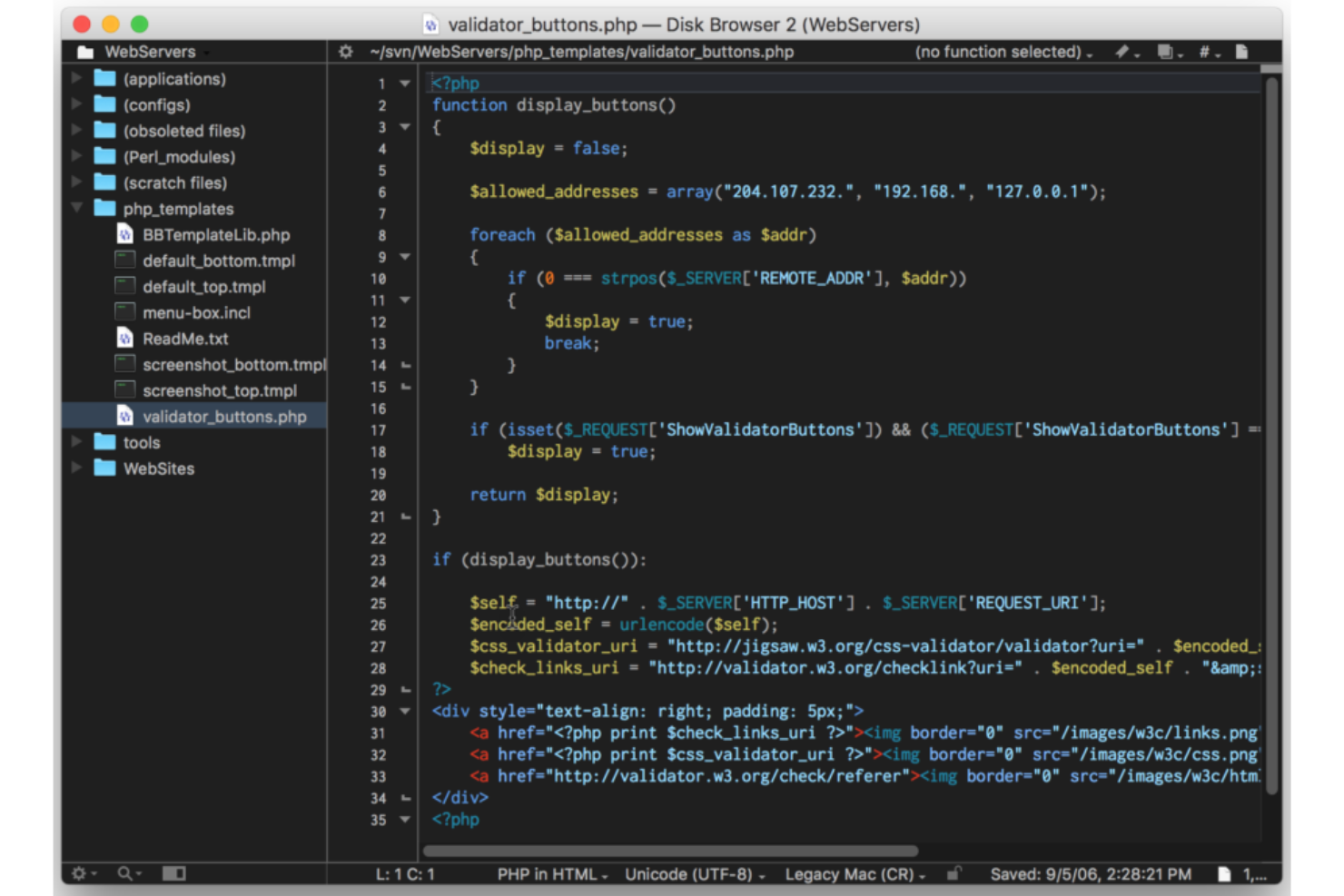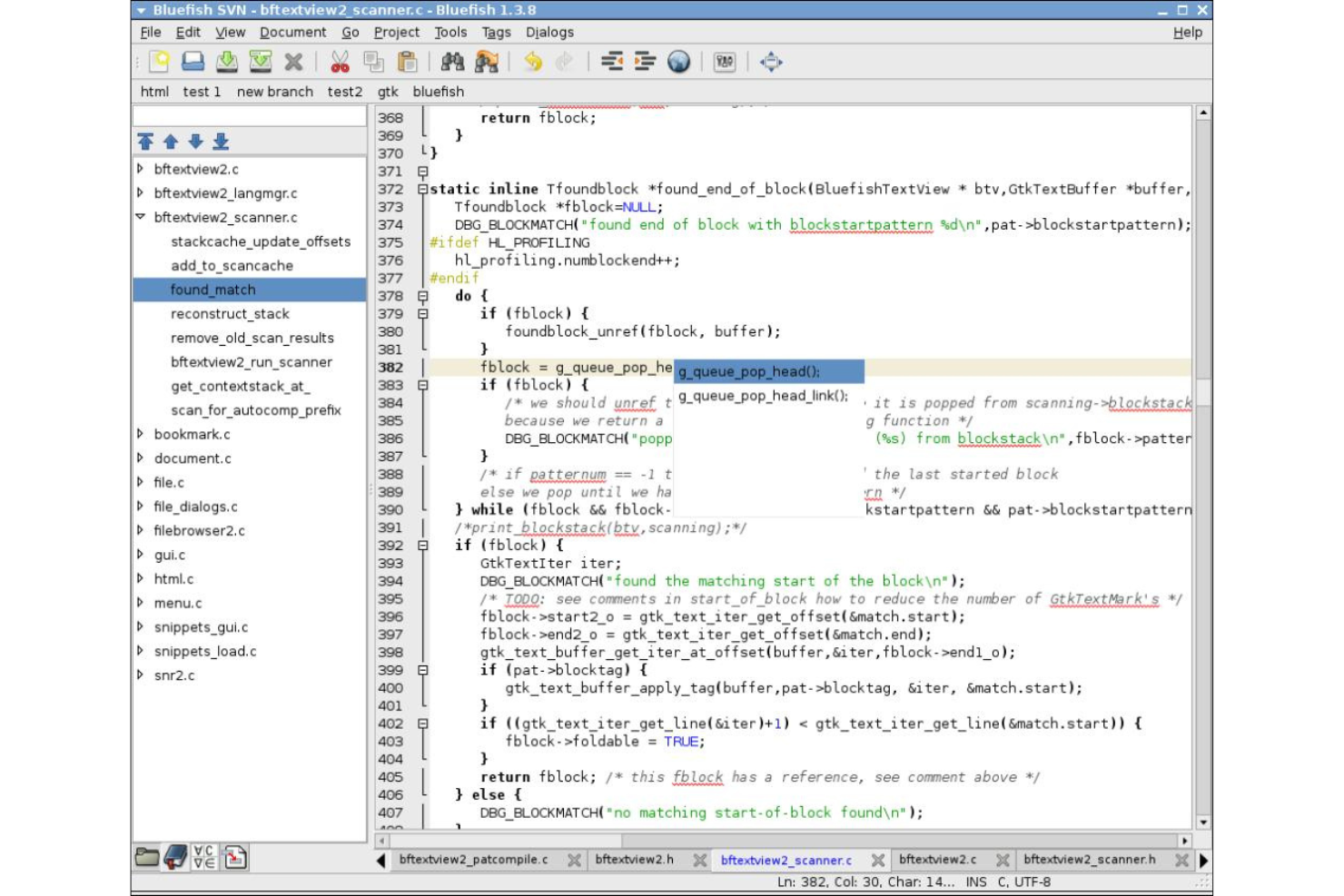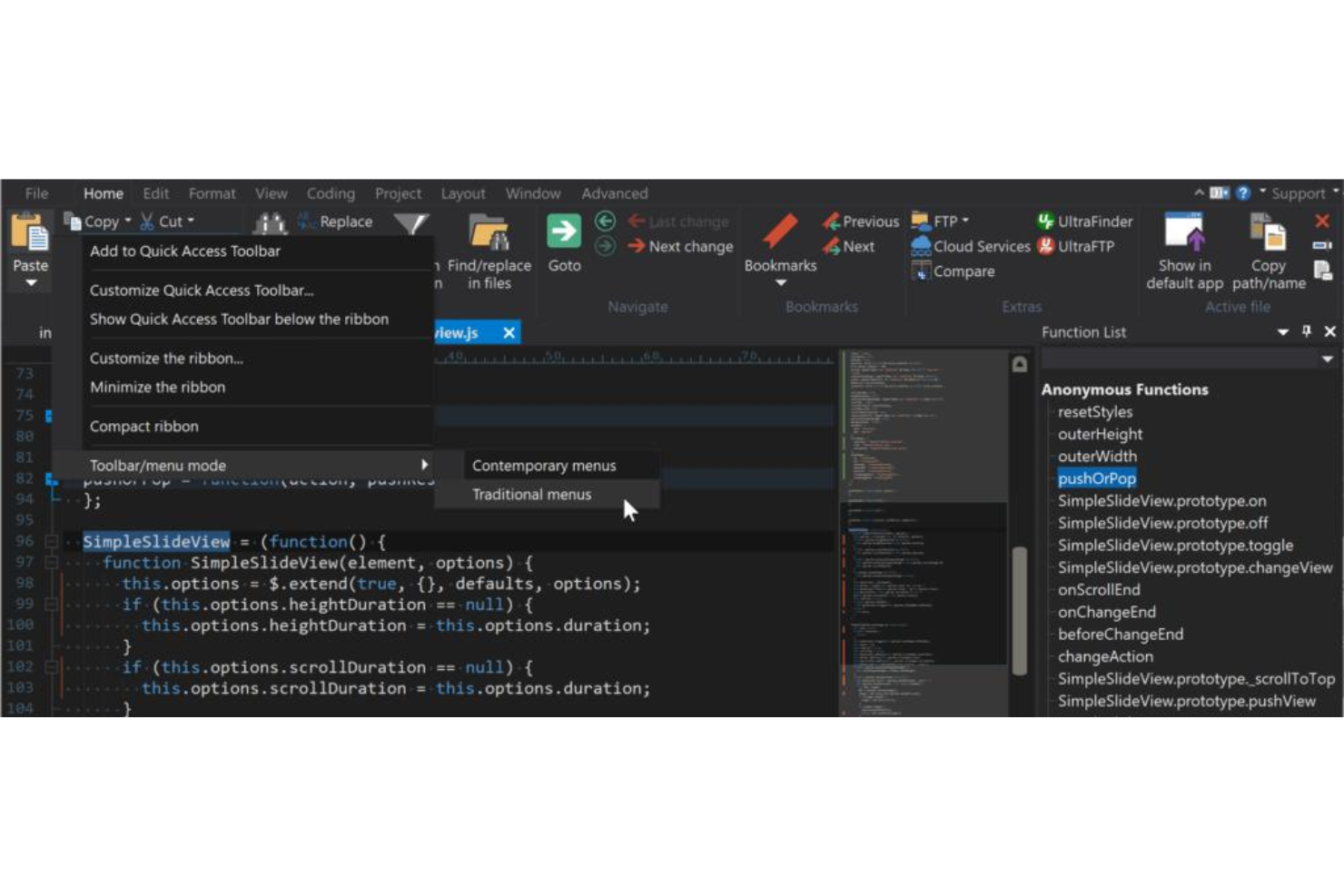Best Text Editor Software Shortlist
Here's my pick of the 10 best software from the 22 tools reviewed.
Our one-on-one guidance will help you find the perfect fit.
Text editor software is a critical tool for anyone dealing with code, file formats, or even just writing. With features like snippets, indentation, split editing, and compatibility with various file formats, these tools are designed to streamline your work. I know the frustrations of working without a powerful text editor – from managing code alignment to finding that one missing bracket in a sea of text.
That's why I've compiled this list to help you choose the right tool that will not only meet your needs but also make your daily tasks more enjoyable and efficient. The benefits of using these tools are immense, from saving time with handy snippets to maintaining consistency through proper indentation. If you're tired of struggling with cumbersome text handling, you'll find the solutions in the options I've gathered here.
What is Text Editor Software?
Text editor software is a type of application that allows users to create, modify, and manipulate plain text files. These tools are fundamental to a wide variety of professionals, including programmers, writers, and web developers. Programmers use text editors to write and edit source code in various programming languages, while writers may use them to compose and structure documents.
Web developers often rely on specialized text editor software that includes features like syntax highlighting and autocomplete to efficiently create and maintain web pages. These versatile tools cater to different needs and preferences, providing functionalities that aid in achieving precision and productivity in text-related tasks.
Best Text Editor Software Summary
| Tool | Best For | Trial Info | Price | ||
|---|---|---|---|---|---|
| 1 | Best for programmers needing a customizable interface | Not available | Free to use | Website | |
| 2 | Best for real-time code evaluation and modification | Not available | Pricing upon request | Website | |
| 3 | Best for macOS users in need of advanced search | Not available | From $3.33/user/month (billed annually) | Website | |
| 4 | Best for web designers with a live preview feature | Not available | Free to use | Website | |
| 5 | Best for web developers requiring concurrent projects | Not available | Free to use | Website | |
| 6 | Best for lightweight design with basic IDE features | Not available | Free | Website | |
| 7 | Best for large file handling and manipulation | 30-day free trial | From $7.50/user/month (billed annually) | Website | |
| 8 | Best for simplicity in editing and syntax highlighting | Not available | From $27/user/month (billed annually) | Website | |
| 9 | Best for those wanting an extensible, customizable editor | Free plan available | Free | Website | |
| 10 | Best for experienced users seeking efficient text editing | Free plan available | Free | Website |
-

Docker
Visit WebsiteThis is an aggregated rating for this tool including ratings from Crozdesk users and ratings from other sites.4.6 -

Pulumi
Visit WebsiteThis is an aggregated rating for this tool including ratings from Crozdesk users and ratings from other sites.4.8 -

GitHub Actions
Visit Website
Best Text Editor Software Reviews
Notepad++ is a text and source code editor widely recognized for its user-friendly template and robust functionality. Its highly customizable interface aligns with the needs of programmers who require specific settings for their coding environment, making it best for those needing personalized configurations.
Why I Picked Notepad++:
I selected Notepad++ after closely judging its flexibility and adaptability. Among its peers, it distinguished itself by offering a highly customizable interface that caters to programmers with specific preferences. Notepad++ stands out as the best option for those who seek to tailor their workspace, supporting multiple programming languages and settings.
Standout features & integrations:
Notepad++ comes with syntax highlighting and syntax folding, which can be tailored to individual needs. The tabbed interface allows for easy navigation between multiple files, and a rich plugin architecture extends functionality. Integration with popular compilers and version control systems makes it a strong choice for programmers, while FTP support enables direct editing on servers.
Pros and cons
Pros:
- Large selection of plugins
- Wide range of supported programming languages
- Extensive customization possibilities
Cons:
- Some plugins might introduce stability issues
- Interface can be overwhelming for newcomers
- Microsoft Windows-only compatibility
Light Table offers a unique approach to coding by allowing developers to see real-time evaluations of their code. This interactive IDE emphasizes instant feedback, which is particularly beneficial for understanding how code changes affect output, making it the top choice for those who prioritize real-time code evaluation and modification.
Why I Picked Light Table:
When I was selecting tools for this list, Light Table immediately captured my attention due to its distinct real-time feedback feature. Many editors provide syntax highlighting or code completion, but few offer the immediate evaluation that Light Table does. Based on my assessment and comparison with other tools, I am of the opinion that Light Table is unparalleled for developers who place a premium on real-time code evaluation and modification.
Standout features & integrations:
Light Table stands apart with its 'Watches' feature, allowing developers to view real-time evaluations side-by-side with their code. The inline code evaluation feature facilitates a deeper understanding of code functionality. Additionally, it provides built-in integration with various programming languages, ensuring flexibility across projects.
Pros and cons
Pros:
- Broad language support ensures versatility
- Inline code evaluation fosters a deeper understanding.
- Real-time code evaluation offers immediate feedback.
Cons:
- Interface might not appeal to everyone
- Might be overkill for simple coding tasks
- May have a steeper learning curve for new users
BBEdit is a text editor designed specifically for macOS users, offering robust features with an emphasis on advanced search functionality. Whether searching within a single document or across multiple files, BBEdit's powerful search features set it apart, making it best for macOS users in need of advanced search capabilities.
Why I Picked BBEdit:
I chose BBEdit after closely comparing its features with those of other macOS text editors. Its ability to handle complex search queries across various file types and within different projects is unique and compelling. I determined that BBEdit stands out as the best tool for macOS users seeking advanced search capabilities, particularly when dealing with extensive code bases or intricate text manipulation tasks.
Standout features & integrations:
BBEdit's search capabilities are second to none, with features such as regular expression support, function popup, multi-file search, and detailed results reporting. The text editor also supports syntax highlighting for over twenty languages and offers integration with various version control systems like Git and Subversion, facilitating collaborative work.
Pros and cons
Pros:
- Designed specifically for macOS, ensuring optimal performance
- Integration with popular version control systems
- Exceptional search functionality
Cons:
- Some users might prefer more modern UI design
- May be more features than needed for casual text editing
- Limited appeal to non-macOS users
Brackets is an open-source text editor specifically tailored for web development. Its live preview feature, allowing web designers to see changes in real-time, makes it the best choice for those seeking immediate feedback on their design alterations.
Why I Picked Brackets:
I chose Brackets because of its unique and highly effective live preview functionality that aligns perfectly with modern web design needs. While comparing and judging the alternatives, Brackets stood out for this feature, which simplifies the design process and minimizes guesswork. It is best for web designers who want to see immediate visual feedback as they work on their projects.
Standout features & integrations:
Brackets offer inline editing, letting developers edit CSS and JavaScript within the same code window. The live preview feature is synchronized with the code editor, providing an instantaneous reflection of changes. Integrations with popular preprocessor support such as LESS and SCSS improve its functionality for contemporary web development.
Pros and cons
Pros:
- Strong community support
- Inline editing for CSS and JavaScript
- Live preview for immediate feedback
Cons:
- Performance can lag with large projects
- Might be less intuitive for beginners
- Primarily focused on web development, less versatile for other coding needs
Bluefish is a powerful text editor geared toward programmers and web developers. With the ability to handle multiple projects simultaneously, it streamlines the process of editing files in various languages, making it best for web developers requiring concurrent projects.
Why I Picked Bluefish:
I chose Bluefish after carefully comparing and judging its capacity to support multiple projects at the same time. The feature that makes Bluefish stand out from others is its ability to facilitate the work of web developers handling multiple projects concurrently. My determination led me to select Bluefish as the best for those needing to juggle different web development projects simultaneously.
Standout features & integrations:
Bluefish's standout features include its capability to open over 500 documents concurrently and its inbuilt project support that organizes multiple projects effortlessly. Its syntax highlighting supports various programming languages, enhancing the coding experience. Integration with web browsers for previews and other development tools creates an environment tailored to web developers' needs.
Pros and cons
Pros:
- Integrates well with web browsers for real-time previews
- Extensive syntax highlighting for different programming languages.
- Supports handling of numerous documents and projects concurrently.
Cons:
- The learning curve may be steep for newcomers to web development
- Lacks some advanced features found in commercial text editors
- Interface might be considered less modern compared to some other editors
Geany is a text editor that strikes a balance between minimalist design and essential Integrated Development Environment (IDE) features. It's designed to provide a lightweight experience without sacrificing the tools required for programming, making it best for those seeking a lightweight design with basic IDE features.
Why I Picked Geany:
I chose Geany because it aligns with the need for an uncluttered yet functional development environment. Its selection was determined by its efficiency in providing a lean platform that still retains basic IDE characteristics. In comparing it with other tools, Geany's simplicity and lightweight design make it stand out, and that's why I believe it's best for developers who need basic IDE features without unnecessary complexity.
Standout features & integrations:
Geany's key features include syntax highlighting, code folding, and auto-completion. The combination of these tools provides a comfortable coding experience while keeping the software lightweight. Geany also integrates with common compilers and interpreters, allowing developers to compile and run code directly within the app.
Pros and cons
Pros:
- Cross-platform support, making it accessible on various operating systems
- Integrates with common compilers and interpreters.
- Simple and lightweight design without sacrificing essential IDE features.
Cons:
- The plugin ecosystem might be limited, restricting extensibility
- Limited customization options compared to other editors
- Lacks some advanced features found in more robust IDEs
UltraEdit is a versatile and robust text editor renowned for its ability to handle large files and complex data structures. This capacity makes it a preferred tool for developers and data professionals who often need to manipulate massive files, positioning it as the best for large file handling and manipulation.
Why I Picked UltraEdit:
I picked UltraEdit for this list after judging its extraordinary capability in handling large files. What makes it stand out from other text editors is its optimized performance and reliability, even with gigabyte-sized documents. This unmatched efficiency in handling and manipulating extensive files is why I determined UltraEdit to be best for those dealing with large datasets or big coding projects.
Standout features & integrations:
UltraEdit's most critical features include handling large files with ease, offering a multi-window user interface, and providing strong search and replace functionality. The software also supports various coding languages and integrates with FTP, SSH, and Telnet, making remote file editing and management straightforward.
Pros and cons
Pros:
- Strong integration with remote file management tools
- Comprehensive feature set for coding and text manipulation
- Excellent performance with large file handling
Cons:
- Some users might find the annual billing restrictive
- Interface may be intimidating for beginners
- Might be overkill for simple text editing needs
TextPad is a versatile text editor known for its simplicity and robust syntax highlighting capabilities. As a tool designed to be intuitive yet powerful, it caters to both beginners and experienced users, making it best for those looking for simplicity in editing and syntax highlighting.
Why I Picked TextPad:
I chose TextPad for this list after determining that it offers a clean and uncluttered interface, coupled with effective syntax highlighting. Comparing it with other text editors, I found that TextPad's focus on core functionalities, without unnecessary complexities, makes it stand out. Therefore, in my judgment, it is the best for users seeking a straightforward experience with syntax highlighting.
Standout features & integrations:
TextPad's most useful feature is its extensive syntax highlighting, which supports numerous programming languages. Its search and replace function operates across multiple files, facilitating efficient editing. Additionally, it offers integration with compilers and other external tools, providing a cohesive development environment.
Pros and cons
Pros:
- Efficient multi-file search and replace functionality
- Intuitive interface that promotes ease of use.
- Robust syntax highlighting for many programming languages.
Cons:
- Limited support for modern plugins and extensions
- May not be suitable for highly complex development tasks
- Lacks some of the advanced features found in other editors
Emacs is an advanced, extensible, and highly customizable text editor that can be tailored to suit various programming tasks. The level of personalization and extension capability is unparalleled, making it the best choice for those who want an editor that can be molded to their specific needs.
Why I Picked Emacs:
I chose GNU Emacs after careful comparison and judgment of its customizable nature. The flexibility and power to add or modify functionalities according to individual requirements set it apart from other text editors. This extensibility makes it best for those wanting a tool that can be tailored to their exact needs, from coding to content writing.
Standout features & integrations:
Emacs supports a wide array of programming languages and offers numerous extensions that improve its utility. It integrates with many version control systems like Git, allowing developers to manage their codebase from within the editor. Its key binding and macro recording functionality provide further customization and automation capabilities.
Pros and cons
Pros:
- Comprehensive documentation for users to make the most out of customization
- Strong community support
- Highly extensible and customizable
Cons:
- Aesthetically less modern compared to some alternatives
- Can become resource-intensive with extensive customizations
- Steeper learning curve for beginners
Vim is a powerful and highly efficient text editor that's widely appreciated by experienced users. It’s designed for use both from a command-line interface (CLI) and as a standalone application in a graphical user interface (GUI). Its keyboard-centric approach and unique modes of operation make it a fast and responsive tool for those who want to minimize the use of the mouse, justifying its position as the best option for experienced users seeking efficient text editing.
Why I Picked Vim:
I chose Vim after judging its value in providing efficient text editing for those who are already familiar with its unique interface. What makes Vim different from other text editors is its modal design, where different modes are used for navigation and editing. This setup allows for a high degree of efficiency, especially for experienced users, and is why I determined it to be the best for those seeking to streamline their text editing process.
Standout features & integrations:
Vim's main features include modal editing, where users switch between different modes to navigate, edit, and manipulate text. Extensive plugin support allows customization and added functionality. Vim also integrates well with many popular version control systems like Git, enabling code management within the editor.
Pros and cons
Pros:
- Available on multiple platforms
- Extensible with numerous plugins
- Highly efficient text editing through modal design
Cons:
- Configuration and customization can be complex and time-consuming
- Lacks some modern conveniences found in other editors
- Steep learning curve, particularly for beginners
Other Text Editor Software
Below is a list of additional text editor software that I shortlisted but did not make it to the top. Definitely worth checking them out.
- Visual Studio Code
For developers using multiple languages
- Sublime Text
For fast code navigation and symbol search
- Zoho Writer
Good for collaborative document creation and real-time editing
- ICEcoder
Good for browser-based code editing with live previews
- gedit
Good for general-purpose text editing
- EditPlus
Good for text, HTML, PHP, and Java editing with integrated FTP capabilities
- RJ TextEd
Good for code development with built-in CSS and HTML previews
- Kate
Good for multi-document editing with a tabbed interface
- Code::Blocks
Good for C, C++, and Fortran development with extensible plugin architecture
- Komodo Edit
Good for multi-language programming with customizable skins
- CoffeeCup HTML Editor
Good for website design with visual HTML editing
- Smultron
Good for macOS users looking for clean and intuitive text editing
Selection Criteria for Text Editor Software
Choosing the right text editor software can be a daunting task, given the multitude of options available. Through extensive research and hands-on testing, I've evaluated dozens of text editor tools, focusing on specific functionality essential for various use cases, be it coding, writing, or collaborative work. Here's what I found to be the most critical criteria when selecting this particular type of software:
Core Functionality
The tool you choose should enable you to:
- Edit Text: Basic text editing, including cut, copy, paste, undo, and redo.
- Syntax Highlighting: For coding purposes, color-coding different elements of code.
- Search and Replace: Easily find and replace text within a document.
- File Type Support: Support for various file types like HTML, CSS, JavaScript, Markdown, etc.
- Collaboration: For team projects, the ability to collaborate in real-time.
Key Features
The following are key features that can greatly influence your choice, depending on your specific needs:
- Auto-Completion: Suggests and completes code or text as you write, saving time.
- Debugging Tools: For developers, integrated debugging tools to identify and fix errors.
- Customization Options: Personalize the work environment with themes, fonts, and layout preferences.
- Integration Capabilities: Connect with other tools such as version control systems or project management software.
- Multi-Language Support: Support for writing and editing code in various programming languages.
- Version Control: Allows tracking changes and reverting to previous versions if necessary.
Usability
When it comes to usability, the text editor should have:
- Intuitive Interface: Clear and understandable layout with easily accessible functions.
- Ease of Onboarding: Quick and straightforward setup process with guides or tutorials for beginners.
- Responsive Customer Support: Availability of support channels like email, chat, forums, or community support for any queries or troubleshooting.
- Platform Compatibility: Works smoothly across different operating systems like Windows, iOS, macOS, or Linux.
- Collaborative Features: For team-based projects, a design that facilitates real-time collaboration, commenting, and document sharing.
The chosen text editor must align with the specific needs and objectives of your project or team. Whether you are a writer looking for a distraction-free environment or a developer needing robust coding features, these criteria can guide you in selecting the tool that fits your requirements best.
More Text Editor-Related Software Reviews
Most Common Questions Regarding Text Editor Software (FAQs)
What are the benefits of using text editor software?
Text editor software offers numerous advantages for both developers and writers. Some of the key benefits include:
- Efficiency: Advanced text editors provide features like syntax highlighting, auto-completion, and shortcuts that save time.
- Customization: Many text editors allow users to personalize their work environment according to individual preferences and needs.
- Collaboration: Some text editors enable real-time collaboration with team members, enhancing productivity in team projects.
- Support for Multiple Languages: Developers can write code in different programming languages within the same text editor.
- Integration: Text editors often integrate with various other tools and platforms to create a unified workflow.
How much do these text editor tools typically cost?
Text editor tools offer various pricing models. Some are completely free, while others provide free versions with limited features and then paid versions with more functionality. The typical range of pricing for premium versions can start from $5/user/month and go up to $50/user/month or more, depending on the features and support offered.
What are the cheapest and most expensive text editor software options?
The cheapest options often include free, open-source text editors like gedit and Code::Blocks, which provide essential text editing functions. More expensive options include commercial editors like Komodo Edit and CoffeeCup HTML Editor, which may offer advanced features, better support, and integration capabilities.
Are there any free text editor tools available?
Yes, there are many free text editor tools available for those who do not require advanced features. Some popular free options include gedit, Code::Blocks, and Kate. These tools often provide essential text editing capabilities and can be a great choice for individual users or those working on small projects.
Do text editor tools offer any integrations with other software?
Many text editor tools offer integrations with version control systems like Git, collaboration platforms like Slack, and other development tools. Integrations can greatly enhance the workflow by allowing users to perform tasks within the text editor itself without needing to switch between different applications.
Can text editor software help with code development?
Absolutely! Text editor software is essential for code development. Advanced text editors provide features like syntax highlighting, code completion, error detection, and debugging support, making them indispensable tools for developers.
Is it possible to use text editor tools for collaborative work?
Yes, some text editor tools are designed with collaboration in mind. Tools like Zoho Writer enable real-time collaboration and document sharing, making them suitable for team projects, content creation, and more.
What support and tutorials are available for learning how to use text editor tools?
Most text editor tools offer extensive documentation, community forums, and tutorials to help users learn how to utilize the software effectively. Both free and paid options often provide resources and support to assist users in mastering the tool, whether they are beginners or experienced professionals.
Summary
Selecting the best text editor software hinges on understanding your specific needs and how various tools can meet those requirements. Here's a helpful summary to guide your decision-making process:
- Understand Your Core Needs: Determine what you need from a text editor. Is it for coding, writing, or collaboration? Assess the core functionality, including text editing features, file type support, and collaboration capabilities, to ensure the tool aligns with your particular use case.
- Evaluate Key Features: Look for key features that can enhance your experience, such as auto-completion, debugging tools, customization options, and integration capabilities. These features can significantly impact your efficiency and the way you interact with the software.
- Consider Usability Factors: Assess the design, ease of onboarding, customer support, and platform compatibility. Your text editor should offer an intuitive interface and responsive support to facilitate a smooth user experience, especially if collaboration and platform flexibility are essential to your work.
By focusing on these takeaways, you can sift through the many options available and choose the text editor software that fits your needs, whether you're working on a solo writing project, coding, or engaging in team collaboration.
What do you think?
I've put a lot of time and research into curating this list, but the world of text editor software is vast and ever-evolving. If you've come across a tool that you believe deserves mention or if there's one that's been particularly beneficial for you, please share it in the comments or reach out. Your insights will help me and our community of readers in search of the perfect text editing solution. Let's learn and grow together!










